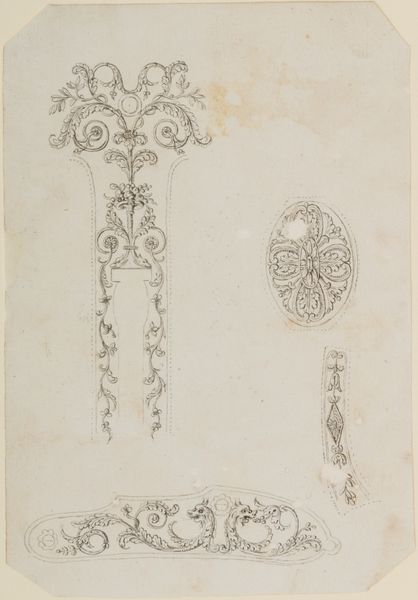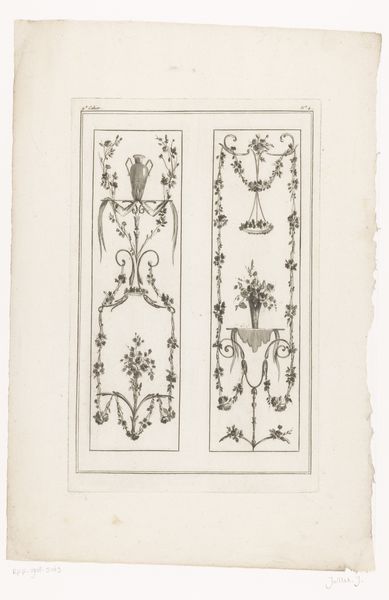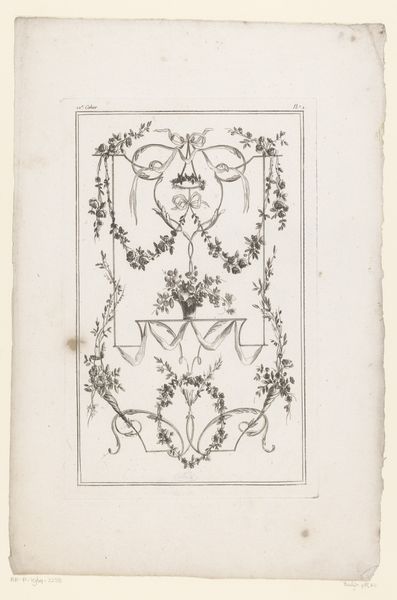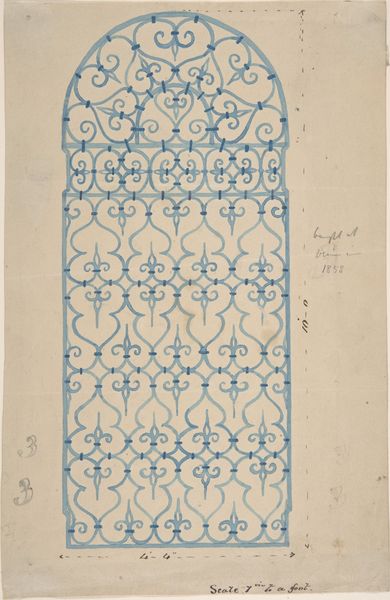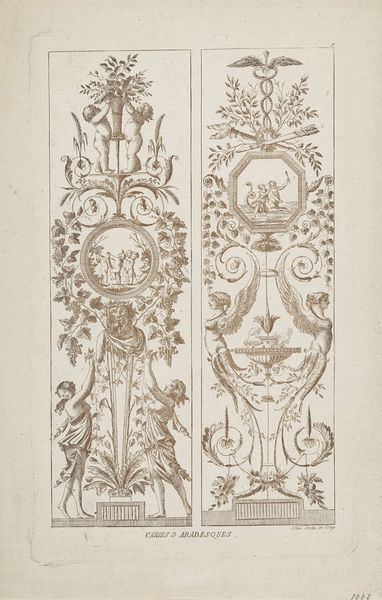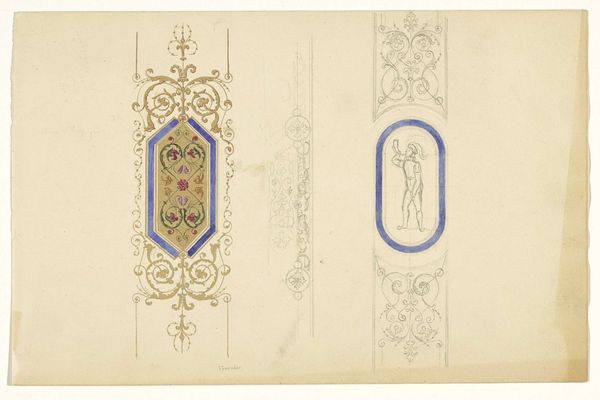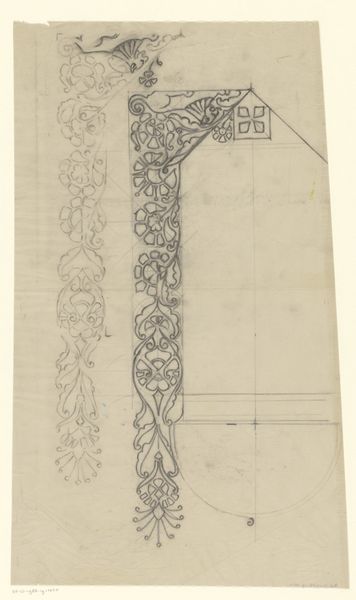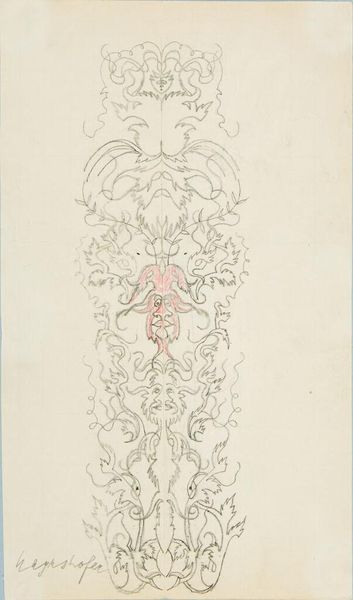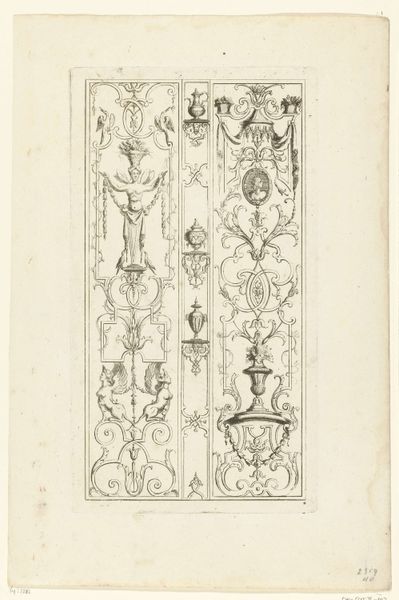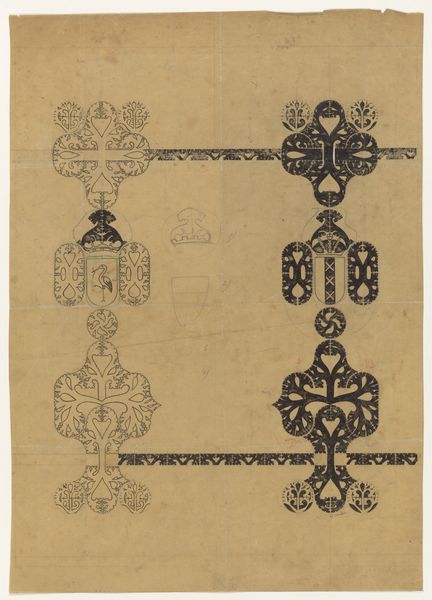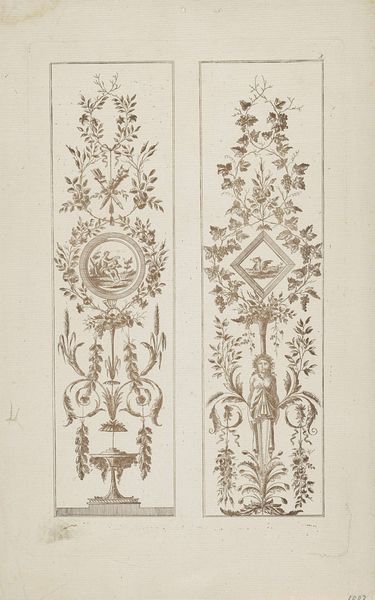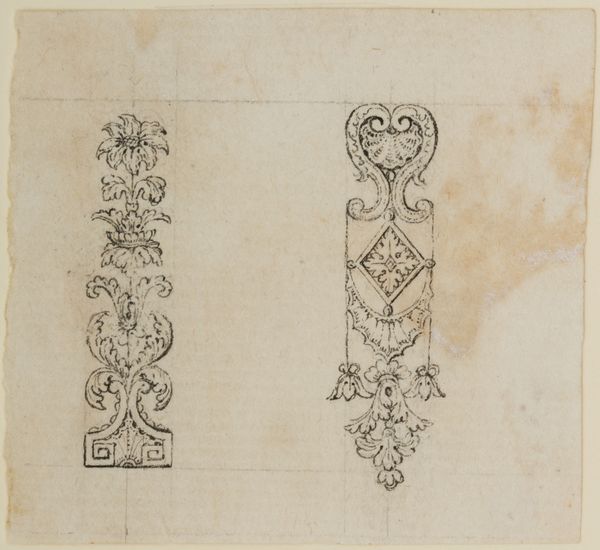
drawing, mixed-media, paper, watercolor
#
drawing
#
mixed-media
#
paper
#
watercolor
#
geometric
#
watercolour illustration
#
decorative-art
#
watercolor
Dimensions: height 253 mm, width 162 mm
Copyright: Rijks Museum: Open Domain
Curator: Here we have "Pilastervulling en twee onderdelen van pilastervullingen", a mixed-media drawing, with watercolor on paper, created by Franz Jakob Kreuter, dating from around 1835 to 1860. What catches your eye about it? Editor: The delicacy, I think. There's something so ethereal about these muted watercolors; it’s like viewing blueprints for a dream. Curator: Yes, and given the context of Kreuter’s workshop, where elaborate interior decorations were crafted, this serves not just as art, but also as a utilitarian blueprint. It provides us a glimpse into 19th-century manufacturing processes for ornamental architectural components. Editor: The recurring motif of birds paired with floral arrangements strikes me as a subtle commentary on the limitations imposed upon women of the era. Encaged birds were, of course, a typical status symbol—but the vibrant colors suggest something more, don't you think? The birds hint at yearning for flight beyond these gilded cages, juxtaposed against those rigidly geometric borders. Curator: That is interesting when viewed through the lens of gender and status. We must consider though, too, the materials and labour involved in translating this design into a physical element. What sort of artisanal labour underpinned these elaborate embellishments for affluent patrons? These decorative elements were likely created for wealthy people to display the labor, resources, and social capital that went into creating an exquisite lifestyle. Editor: Precisely! The layers of social stratification are all baked in: from the original design, down to the workshop craftspeople realizing Kreuter's ideas in decorative material form, to then adorn some bourgeois residence... Who are those laborers? Where do they source these materials? These architectural drawings don’t just materialize from nowhere; there’s always a socioeconomic story attached. Curator: Certainly. Examining such details helps unravel the complex networks involved in creating not only art but the lifestyle of 19th century middle-class families. The availability and relative affordability of watercolors by that time meant that designs could easily circulate—a fascinating convergence of accessibility, artistry, and emerging middle-class ambition. Editor: Ultimately, what strikes me is this drawing acts as an aesthetic mirror reflecting power relations of the era. The delicate rendering of these adornments belie underlying truths. Curator: Indeed, from artisanal practices to socioeconomic structures, it provides layers for us to explore even after its original design and purpose have been achieved. Editor: I completely agree. Each mark carries the weight of history.
Comments
No comments
Be the first to comment and join the conversation on the ultimate creative platform.
